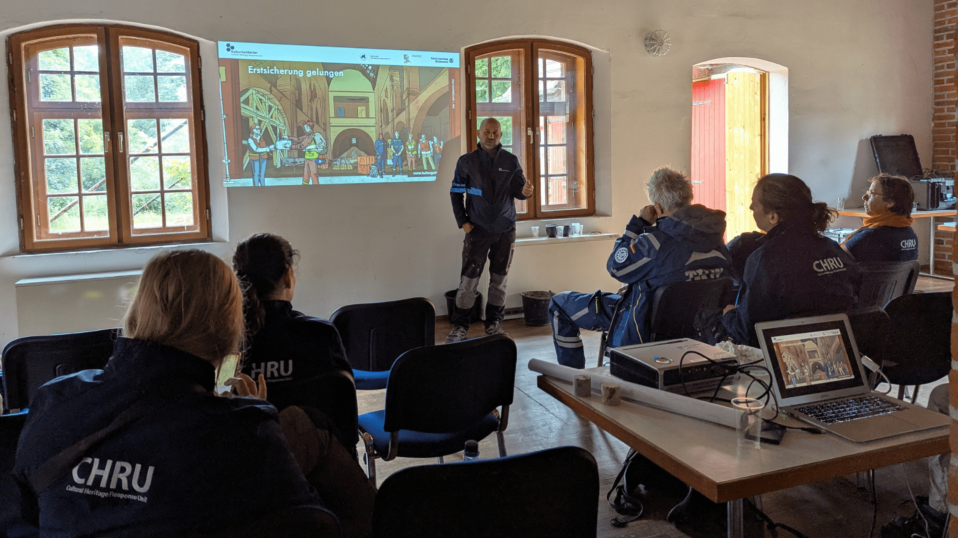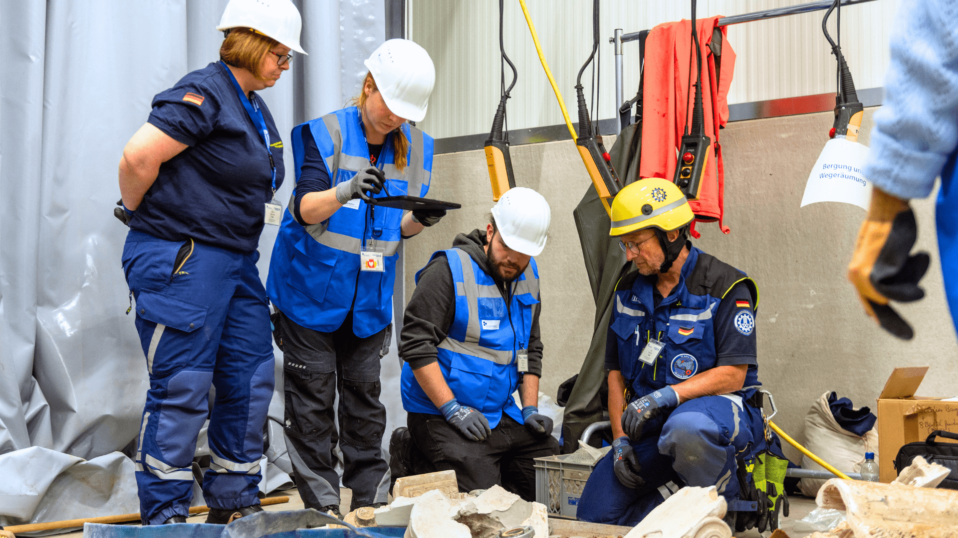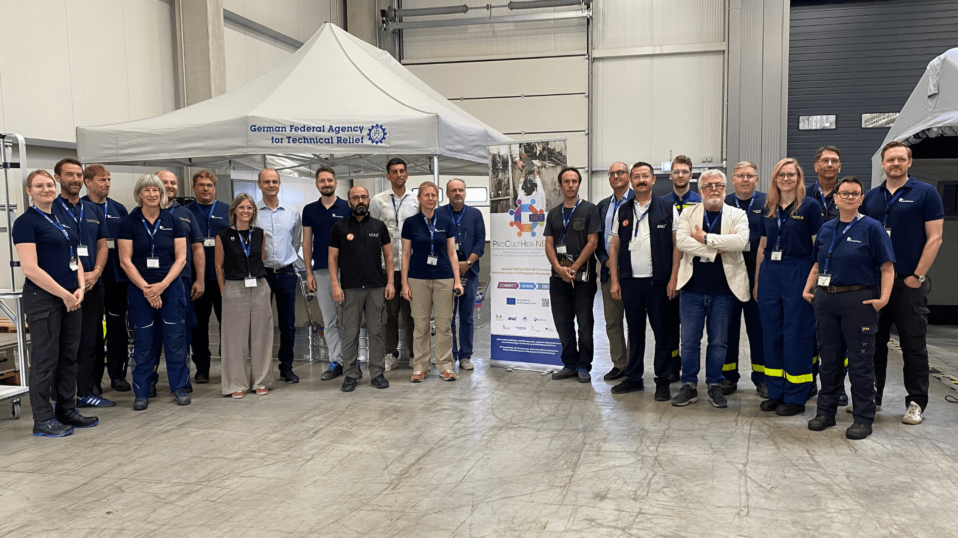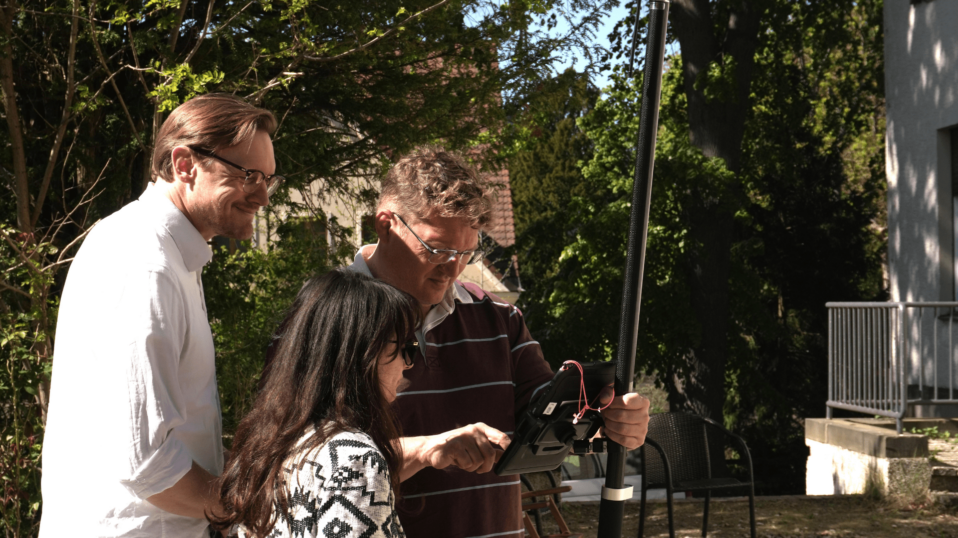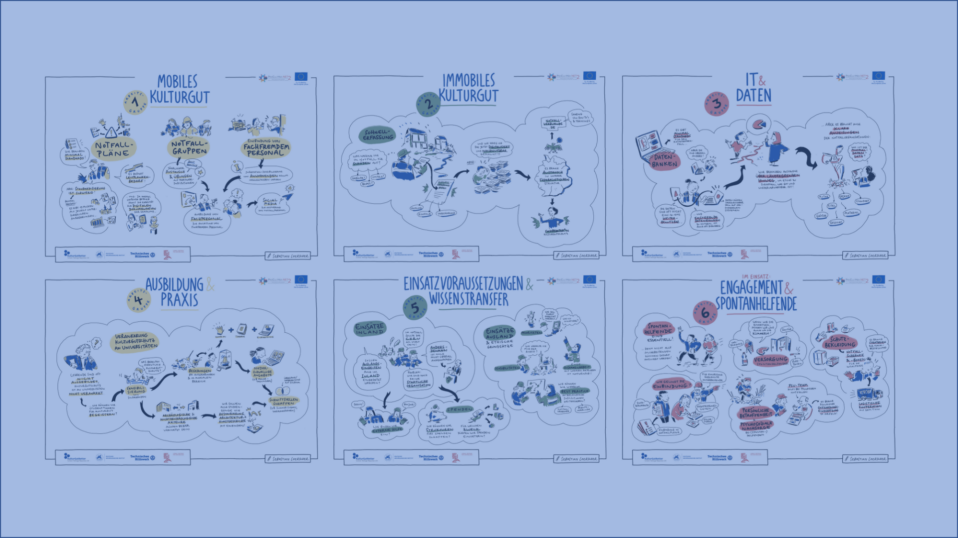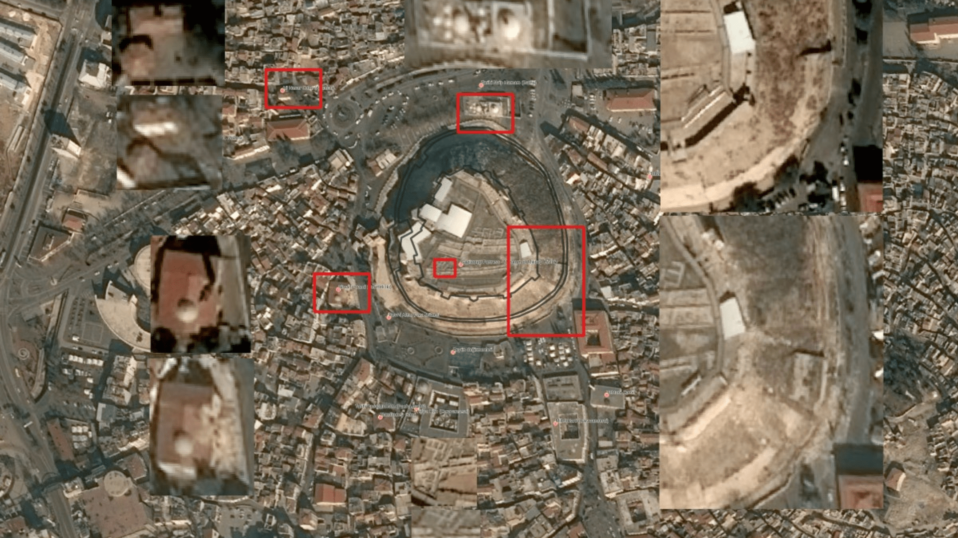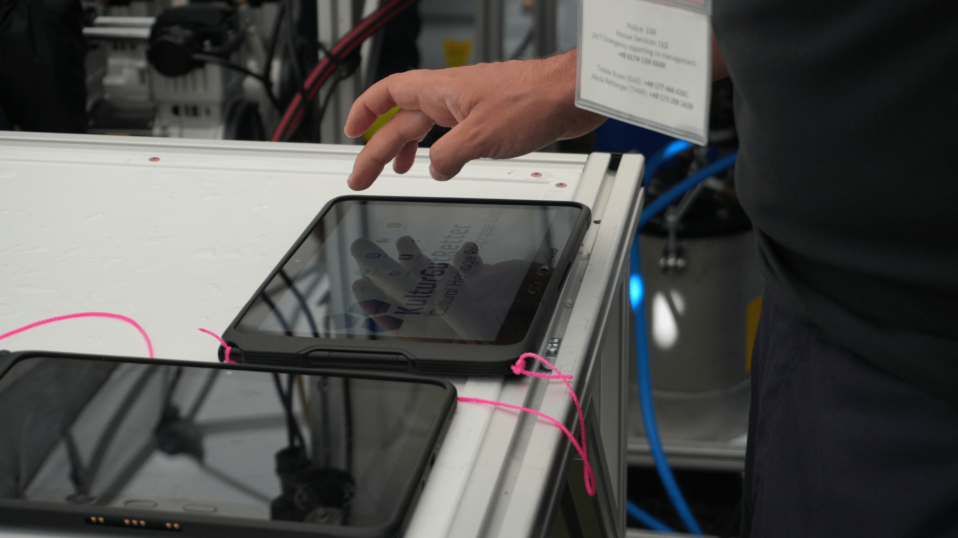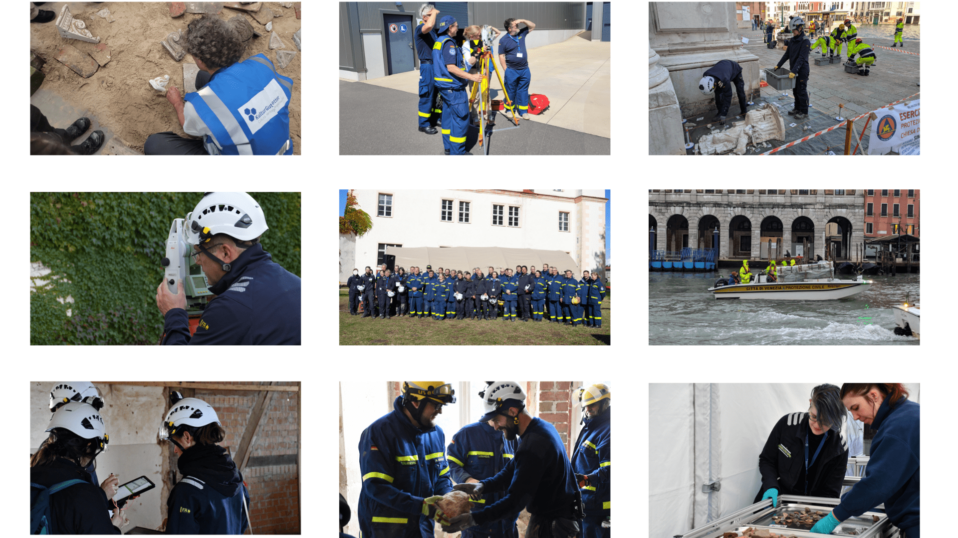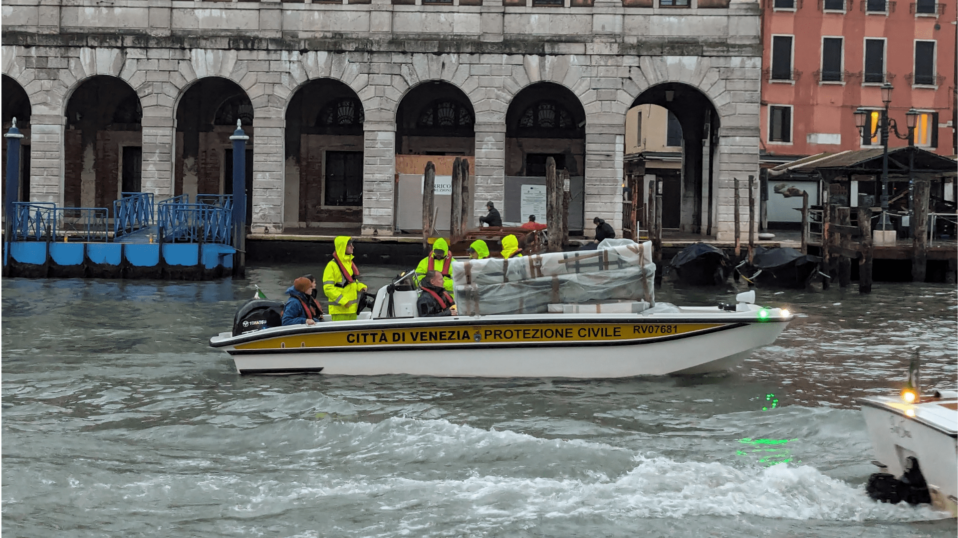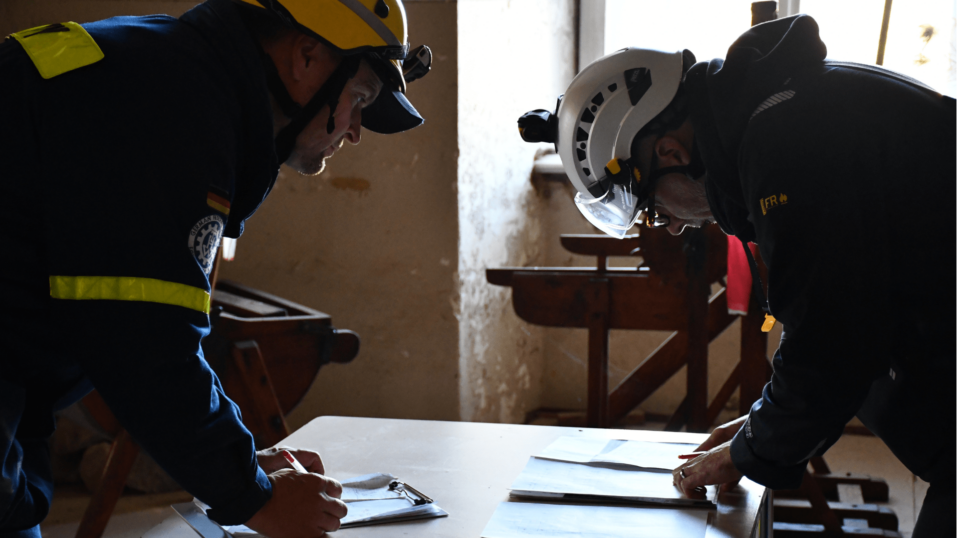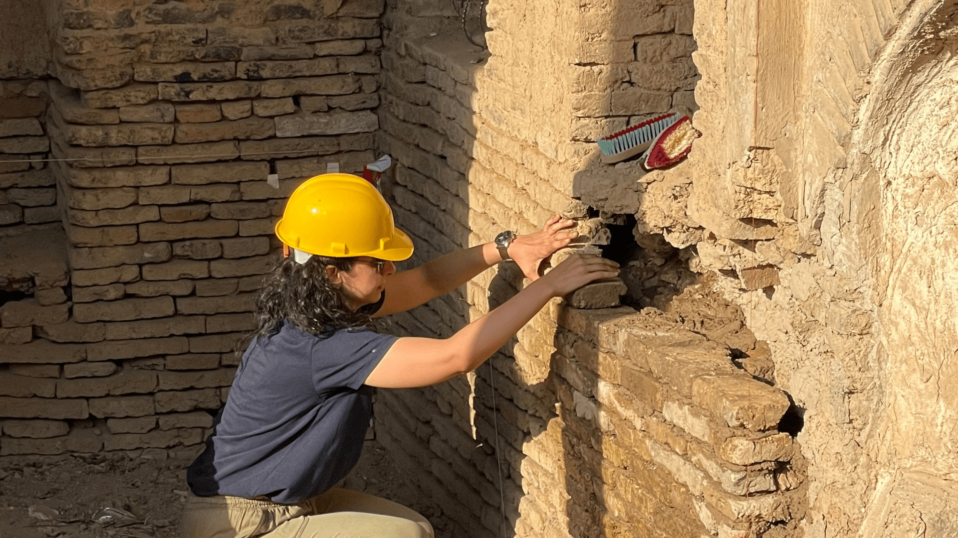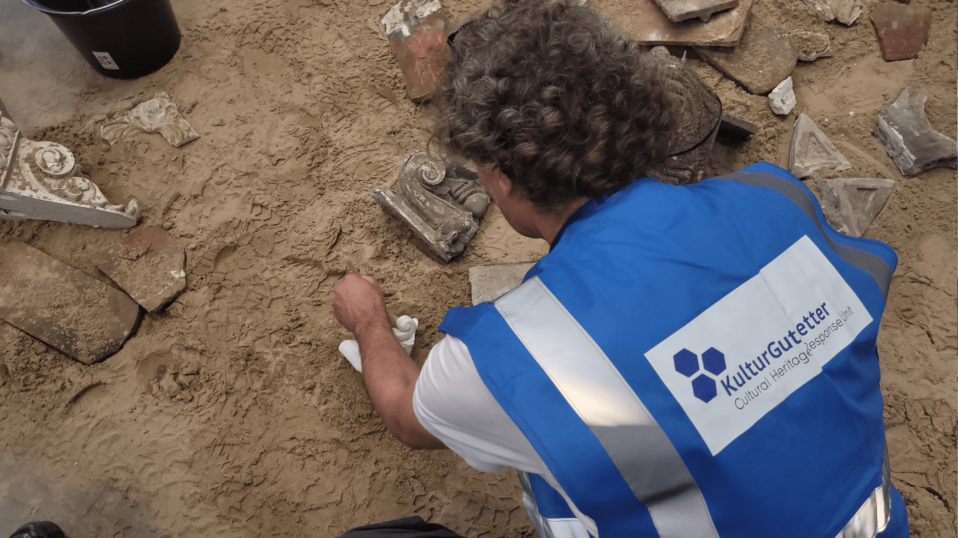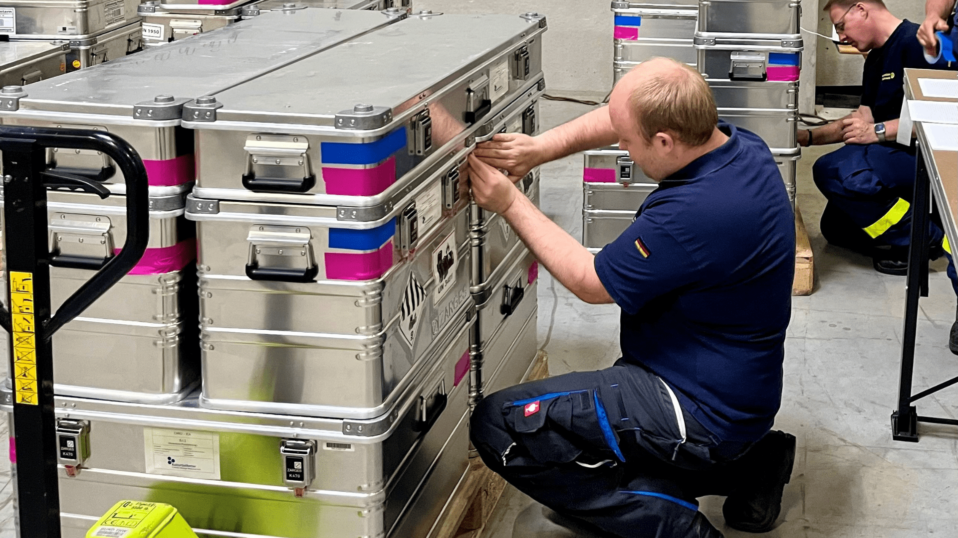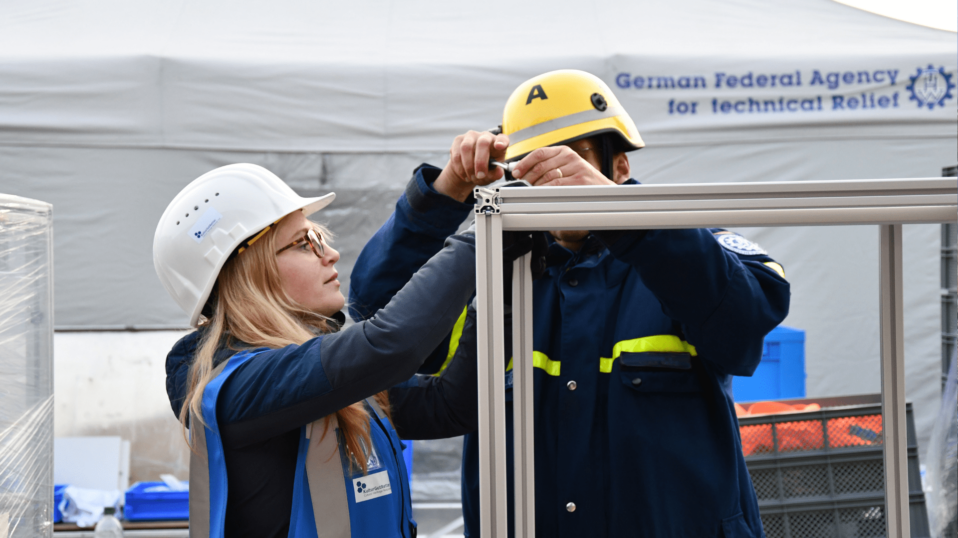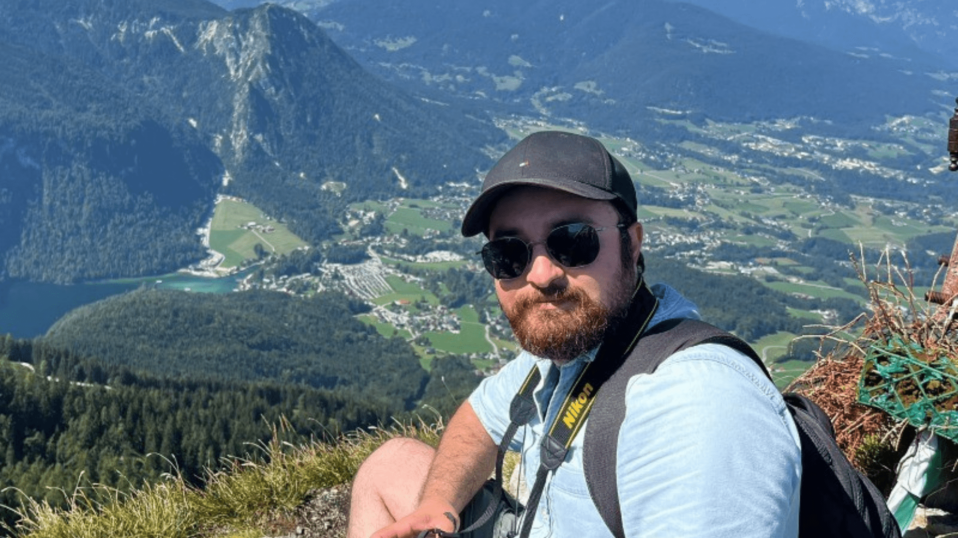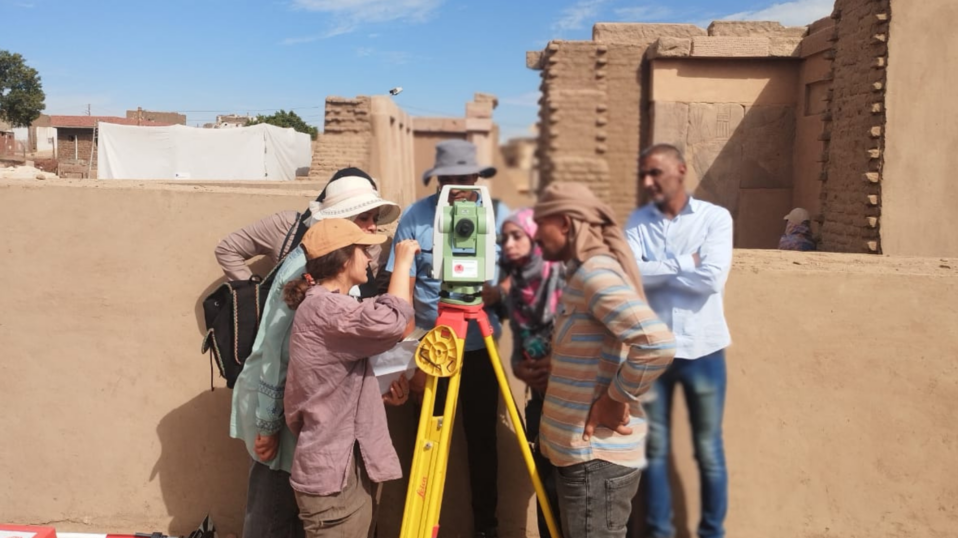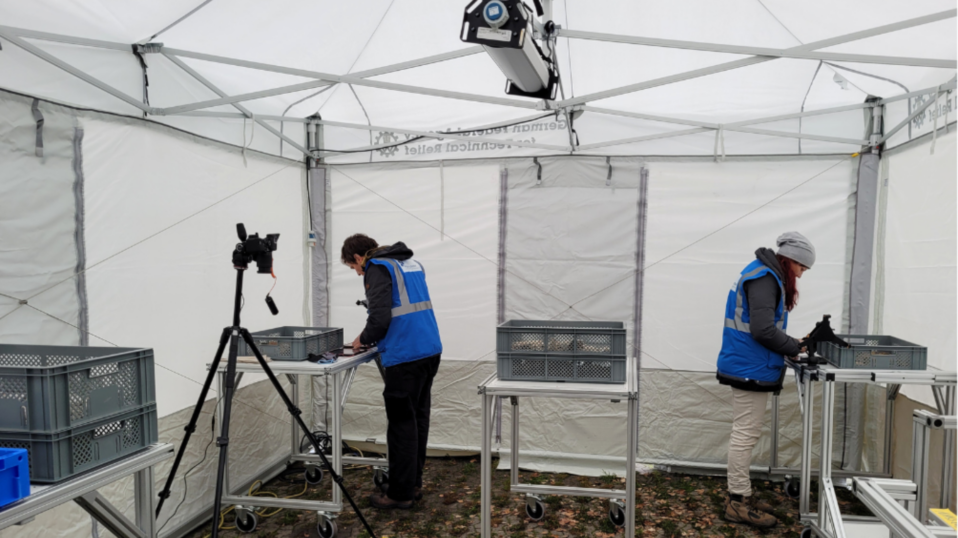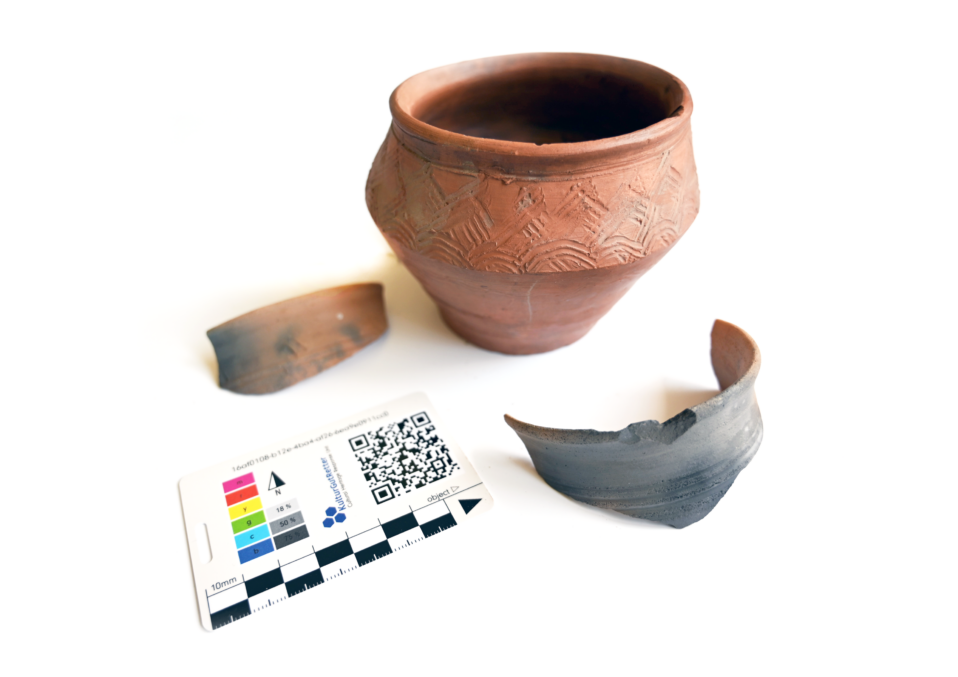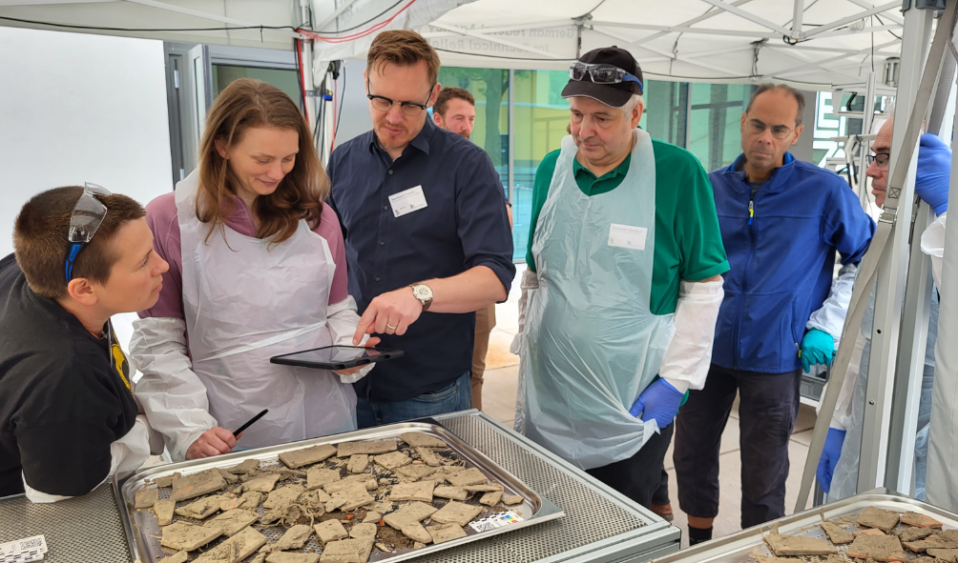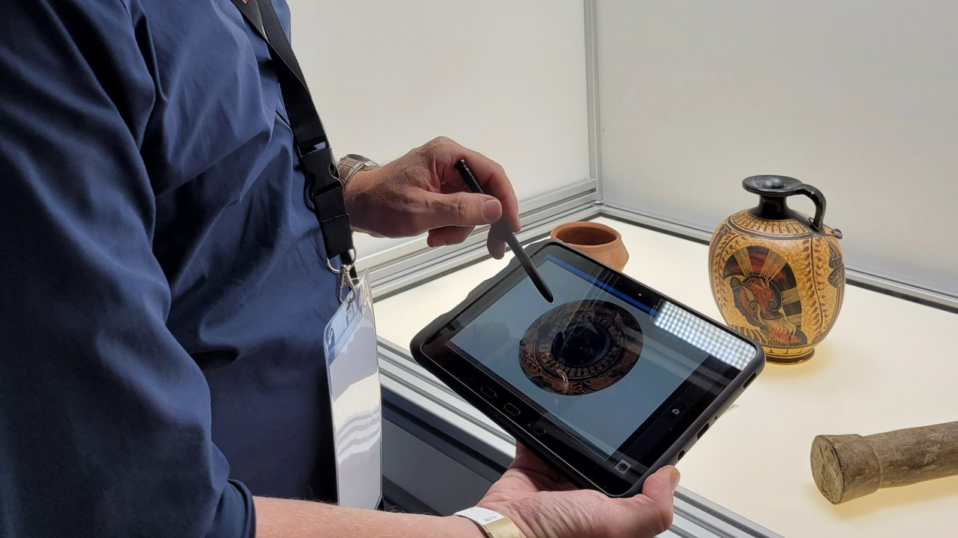Experts in movable and immovable cultural heritage deepen their training
In 2025, two in-depth specialist workshops were organised for volunteers from the CHRU’s Immovable Cultural Assets (ICA) and Movable Cultural Assets (MCA) units. Participants were encouraged to improve their knowledge of work processes by applying them
New training round launched in the KulturGutRetter project
From September 22 to 24, 2025, around 60 volunteer team members participated in a practical station training at the THW logistics center in Hilden as part of the KulturGutRetter project. The training specifically prepares the Cultural
Demonstration of the equipment for the protection of cultural heritage to EU partners
On 3 and 4 July 2025, the KulturGutRetter project presented equipment specially developed for the ‘Cultural Heritage Response Unit’ (CHRU) to European partners at the THW logistics centre in Hilden. This equipment is intended for the
Specialzed IT-training for cultural heritage and civil protection experts in Berlin
At the end of April 2025, IT experts from the Cultural Heritage Response Unit (CHRU) and colleagues from the THW’s ICT (Information and Communication Technologies) department came together in Berlin as part of the KulturGutRetter project’s
National Workshop : “Yesterday-today-tomorrow: where does the protection of cultural heritage stand in 2030?”
In April 2025, the German Archaeological Institute (DAI), with the support of the German Federal Agency for Technical Relief (THW)and the Leibniz Center for Archaeology (LEIZA) organized an online workshop entitled “Yesterday-today-tomorrow: where does the protection
Remote Sensing for Archaeological and Cultural Heritage Sites at Risk
Natural hazards and anthropogenic land-use pressures are causing destructive events to occur with increasing frequency, causing severe damage to Archaeological and Cultural Heritage (ACH) sites. As part of the project KulturGutRetter, the Remote Sensing and Monitoring
IT infrastructure for cultural heritage response missions
The Cultural Heritage Response Unit (CHRU) is implementing a digital documentation system to document both the objects themselves and the measures carried out during response missions to protect cultural heritage. The unit is equipped with its
Looking back on 2024
As we look ahead to 2025 and plan for a new year of intensive project development – with the aim of reaching operational readiness and deployability – it is worth taking stock of what has been
CHRU takes part in a major european exercise in Venice
From 17 to 20 October 2024, Venice hosted an EU MODEX, which for the first time in its history, thanks to the consortium partners of PROCULTHER-NET2 and to the mobilization of the Cultural Heritage Response Unit
First full-scale exercise of KulturGutRetter’s Cultural Heritage Response Unit
From 25 to 28 September 2024, the first full-scale exercise of the Cultural Heritage Response Unit (CHRU) took place at Demerthin Castle (Brandenburg). In a fictitious earthquake scenario, experts from Germany were trained in the international
Securing ruins after a disaster | Hot lime mortar – an old technique put to new uses
The aim of the Cultural Heritage Response Unit (CHRU) of the KulturGutRetter project is to secure monuments and other cultural assets quickly and professionally in the event of a disaster. Experts such as Dr Wanja Wedekind
80 KulturGutRetter volunteers begin their practical training
At the end of June, 80 volunteers from the KulturGutRetter project and the Federal Agency for Technical Relief (THW) started their training in Hilden. In a two-day practical course, the cultural heritage experts were trained to
THW logistics team prepares KulturGutRetter-equipment for future deployment
On 10 and 11 June, THW forces checked and stored for the Cultural Heritage Response Unit (CHRU) of the KulturGutRetter project at the logistics centre in Hilden. When cultural heritage is threatened by a disaster, it
KulturGutRetter start pilot phase: over 100 volunteers begin their training
In 2024 KulturGutRetter volunteers will be trained the first time to assist in disaster situations worldwide with the Cultural Heritage Response Unit (CHRU). These days the training of the cultural heritage experts begins. More than 100
Interview with Pouria Marzban | Remote sensing analyses of threatened cultural heritage after disasters
Geodatascientist Pouria Marzban (German Archaeological Institute, DAI) works in the field of remote sensing in the KulturGutRetter project. Before the Cultural Heritage Response Unit (CHRU) flies out to the disaster area, remote sensing data, maps, and other data are gathered.
KulturGutRetter-Fieldschool in Elephantine – Digitale Werkzeuge für die Dokumentation von Kulturgut
From November 12th to 22nd, 2023, experts from the Egyptian Ministry of Tourism and Antiquities (MoTA) took part in a field school in Elephantine, offered by the KulturGutRetter project and the Cairo Department of the German
KulturGutRetter | field test successfully completed
The emergency conservation of mobile and immobile cultural heritage was tested in a fictive disaster scenario involving staff of the German Archaeological Institute (DAI), the Leibniz Center for Archaeology (LEIZA) and the German Federal Agency for Technical Relief (THW). The large-scale field test took place in Dresden on 18 and 19 October 2023 and was undertaken as part of the KulturGutRetter project.
Data acquisition and data management for the emergency rescue of cultural heritage
Authors: Elvira Iacono, Research Assistant, and Bernhard Fritsch, Data Manager, German Archaeological Institute – DAI Also published in: Technical Bulletin #2, June 2023, PROCULTHER-NET. Emergency rescue of built or movable cultural heritage in the event of
Cultural Heritage Response workshop at the Leibniz Research Institute for Archaeology in Mainz
During a one-day workshop in Mainz in June 2023, 28 cultural heritage professionals from various Leibniz Research Museums and from the Mainz Notfallverbund were familiarized with the KulturGutRetter response mechanism and tested its modular equipment for the emergency conservation of movable cultural heritage.
KulturGutRetter: technical characteristics of a cultural heritage response unit
KulturGutRetter is developing technical characteristics for procedures, teams and equipment, enabling the Unit to cover the tasks of damage assessment, evacuation of movable heritage, and emergency intervention on movable and immovable heritage.
